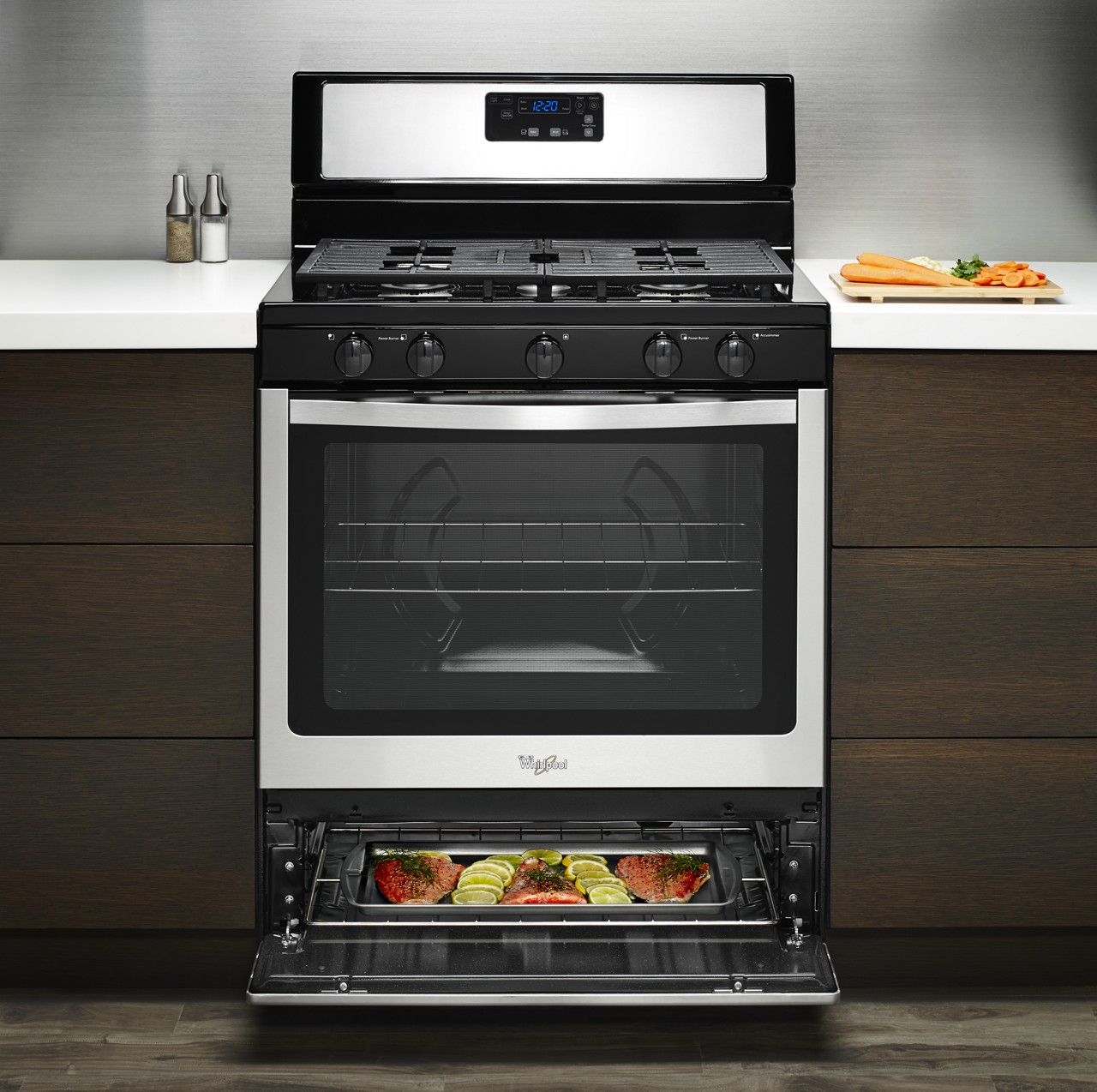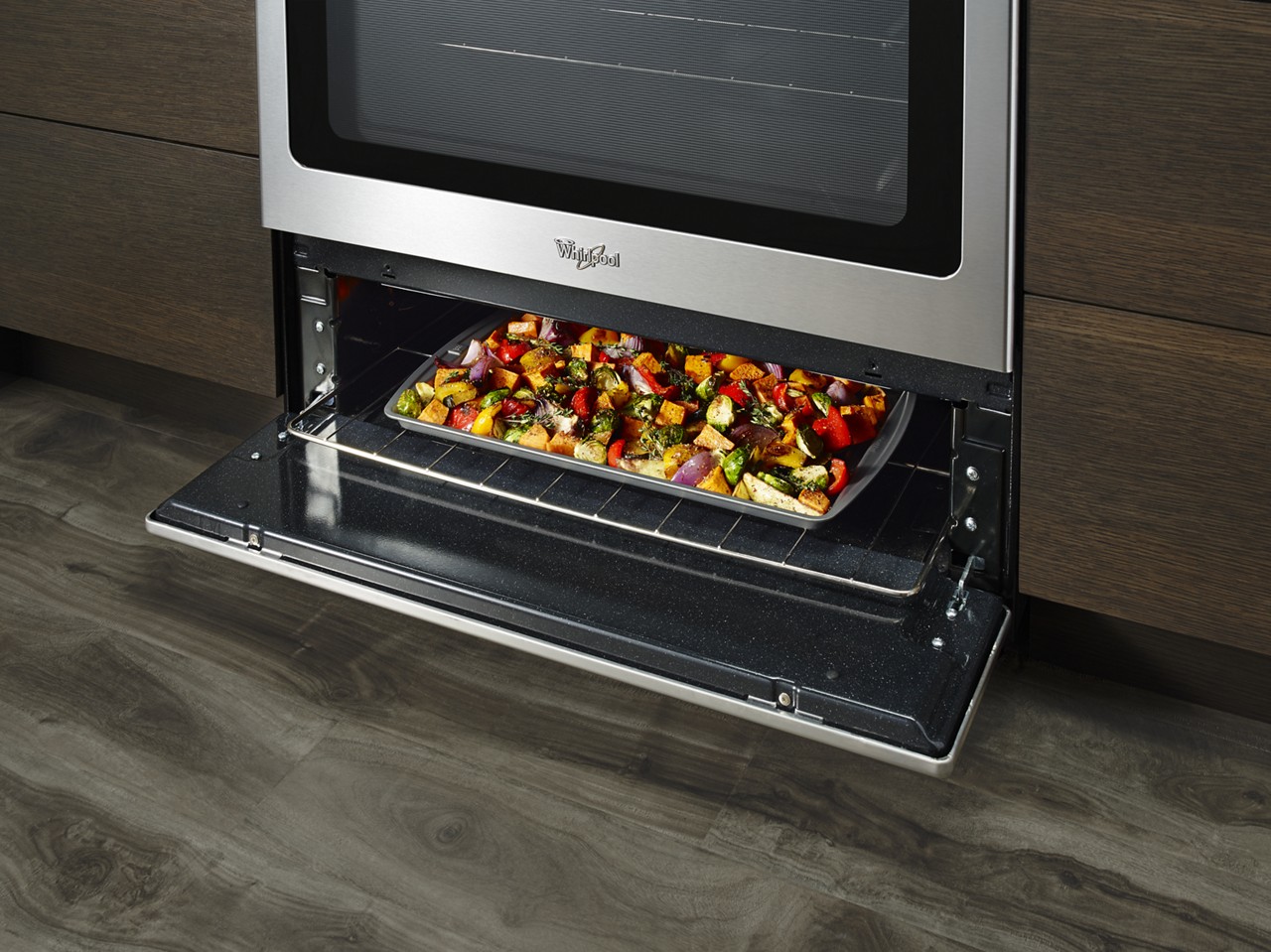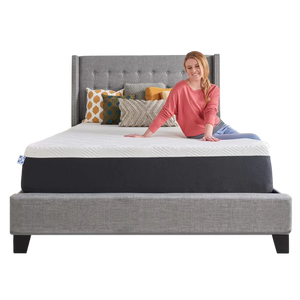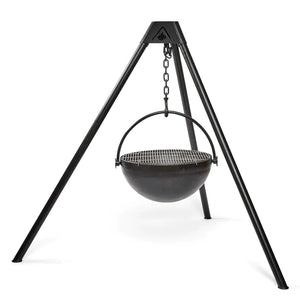What is a broiler, and how can you use it?
Have you ever wondered how restaurants achieve the perfect charred finish on meats, vegetables and oven-baked bread? It’s all thanks to the broiler. This special oven setting is a great way to add extra flavour to your favourite foods, but most people aren’t sure how to use it. We’re here to help. Our guide on how to use a broiler will help you learn the basics of this oven function.

What is a broiler?
A broiler is a section of your oven – usually located near the top – that provides high, direct heat much like a grill. Broiling places food close to your oven’s heating element so that it can quickly cook, brown, char or caramelize. This can give food more complex flavours or help you achieve certain textures.
When you roast or bake food in your oven, the heating elements warm the air inside – cooking your food as it is surrounded by hot, dry air. In contrast, broiling exposes one side of your food to high, direct heat, making it ideal for cooking foods like you would on a grill.
Broiling also allows you to finish cooked foods by creating a crust on steaks, crisping bread, charring vegetables or melting and browning cheese toppings.
How to broil in an oven – the basics
Ready to try out your broiler? While every recipe is different, these general guidelines on how to use a broiler can help you get started:
-
Find your broiler: First, determine where your broiler is located. You can usually find your oven’s broiler near the top of the oven cavity, though some ovens have separate broiler drawers located under the main oven cavity. Check your oven’s user guide for more information.
-
Use broiling cookware: Next, find the right cookware. Some ovens may come with a metal broiling pan consisting of a rack on top and a drip pan underneath. If you don’t have a broiling pan, use a shallow metal baking pan along with a baking rack to hold meat out of grease. You can also use a cast iron skillet for broiling meats. Avoid using glass cookware when broiling – the intense heat can cause it to crack or even shatter.
-
Adjust your oven racks: Before you preheat your broiler, you should always check to make sure your oven racks are adjusted based on what you’re cooking. In general, aim to have a 3-5 inch gap between your broiler and the top of your meat. Thinner cuts and foods that benefit from heavy browning and caramelization should be placed closer to the broil element. Foods that are thicker cuts or bone in take longer to cook and benefit from being located farther from the broil element to allow them to cook to the center and reduce the chance of burning. Overall, the closer you place your food to the broiler, the faster it will cook. Check your recipe to find the right rack placement for your particular dish.
-
Preheat your broiler: Once your racks are in place, let your broiler preheat for several minutes before placing your food inside. Preheating times can vary based on your oven, so check your user guide to see how much time you’ll need. While most broilers operate using an on/off switch, some ovens do have a low/high function or allow you to set a particular temperature. Check your recipe to see what setting you need to use.
-
Watch your food: Broiling takes place under high radiant heat, so it’s important to stay close by and monitor your food. Use your oven light or open the oven door to check on your food’s progress, and follow your recipe’s instructions to avoid overcooking or burning.
How to broil your favourite foods
Much like grilling, broiling is a fun way to bring out new flavours in familiar foods. Before you start experimenting, it’s important to understand some of the basics for different types of foods.
How to broil meats
-
Choose a variety of meat that has a moderate thickness. Examples include ribeye, pork chops, chicken breasts or shrimp. If your meat has not been cooked yet, make sure your meat is thawed and has been out of the refrigerator at room temperature for 30 minutes before broiling. This will keep the meat from charing on the outside but being undercooked on the inside.
-
Adjust your oven racks based on your recipe, then set your broiler to preheat.
-
If you’re using red meat, pat it dry before seasoning and trimming away excess fat. If you’re broiling chicken or fish, brush the meat down with a light coating of oil or marinade. Avoid using too much – this could cause excessive smoke in your oven. Sweetened marinades may also burn before cooking is complete.
-
Prepare your broiler pan by lining the top and bottom halves with aluminum foil, then spraying or brushing with a light coat of oil. Use a knife to carefully pierce the foil on the top half of the broiler pan. This will allow excess fats, oils or marinade to drain away.
-
Cook your meat according to your recipe. You can watch its progress through the oven door; if you need to turn your meat, use tongs or a wide spatula to keep the meat intact.
-
Ensure your meat is cooked by using a meat thermometer. If the surface of the meat has good browning but the center is too cool, move the rack away from the broil element and continue cooking.
-
Once your meat is done, remove it from the pan right away to avoid overcooking. You can let the meat rest for 5-10 minutes to complete the cooking process. For juicier results, make a foil tent over the meat while it rests.

How to broil produce in an oven
-
Choose the fruits or vegetables you wish to broil. Some examples include bell peppers, onions, tomatoes, peaches, mangoes or pineapples.
-
Adjust your oven racks and preheat your broiler.
-
Cut your fruit or vegetables into large chunks. (It’s ok if they’re uneven.) Broilers cook quickly, so larger pieces are better and won’t burn as easily.
-
Prepare your broiler pan as you would for meat – line with foil and spray or brush with a light coat of oil. Remember to perforate the foil to allow juices to drain away.
-
For added flavour, toss your vegetables with olive oil and salt or dried herbs. For fruit, sprinkle evenly with sugar.
-
Once the broiler is ready, place your produce in the oven and cook or char them based on your recipe. Monitor your fruit or vegetables regularly and turn them frequently to prevent burning.
-
Once your produce has cooked, remove it from the broiling pan and let it rest. You can then serve the produce as is or cut it into smaller pieces for use in recipes.
How to broil bread or cheese toppings
-
Adjust the oven rack so your bread or casserole dish can fit under the broiler.
-
Preheat your broiler.
-
Place bread on a shallow baking dish or broiler pan. Sprinkle the bread with cheese if desired.
-
Place the bread in the broiler for 1-2 minutes. Monitor your bread during this time to ensure it does not scorch or burn. Remove the bread when it is golden brown. If you sprinkled bread with cheese, remove it when the cheese is golden brown and bubbling.
Broiling foods is a great way to bring exciting new flavours to your family’s table. That’s why our ranges and wall ovens come with broiler options that help you make the most of your favorite recipes. Explore our selection and find the right fit for your kitchen today.


















